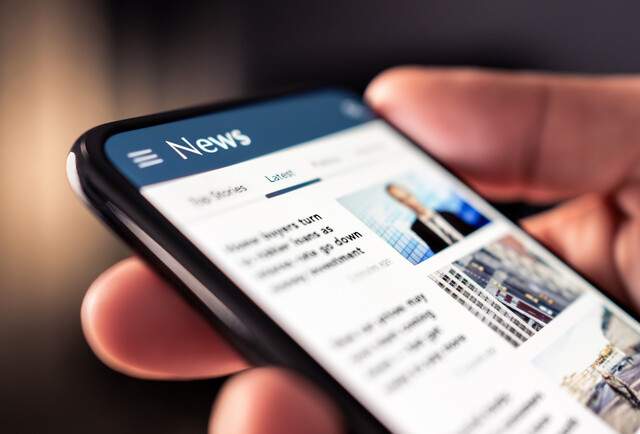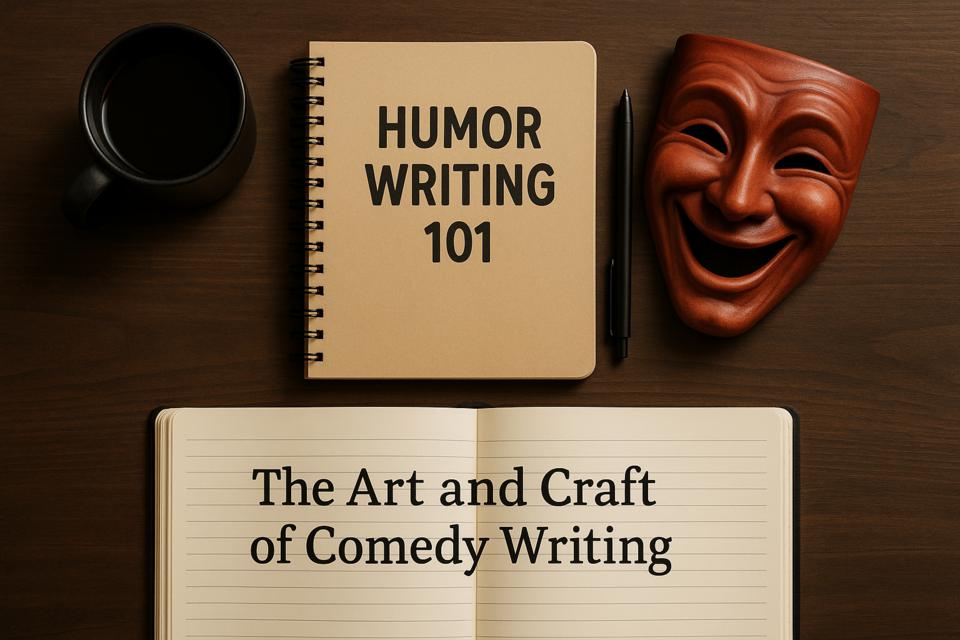Email marketing can be just as effective of other types of online and print advertisements. They are a great way to engage leads, keep in touch with customers, and make sales. However, consumers nowadays are inundated with emails, most of which are spam. Most emails are never opened, much less read. That means the trick for you as a copywriter is learning how to create emails that get opened, read, and then generate response.
About Email Marketing
Emails sent to leads and customers can take on many forms. The main forms of email marketing messages are:
Email newsletters. Email newsletters are sent at regular intervals to subscribers. The goal of email newsletters isn't to make the hard sell, but to build relationships with customers. They are conversational in nature, and they typically feature articles that will be of interest to the customer.
Transactional Emails. These are sent out whenever a customer or lead takes a specified action. For example, when a customer buys a product or signs up for something on the company website. These emails contain sales messages. You want to make sure to put a sales message in a transactional email because these types of emails get opened more frequently than other types. The sales message might be a coupon for their next purchase or an upsell message that includes a discount. According to BusinessDictionary.com, an upsell is "A sales strategy where the seller will provide opportunities to purchase related products or services, often for the sole purpose of making a larger sale."
Direct emails. Direct emails inform customers about things such as sales, offers, and new products. They contain a link for a customer to take action and purchase a sale item or new product.
Autoresponder emails. A series of emails sent out to consumers who subscribe. We'll talk more about these later in this this article.
Addressing Emails
What you put into the "From" line and "Subject" line of an email will directly influence whether your email gets read � or sent to the trash. Both lines of the email should entice the recipient to open your email and start to read what's inside, but a lot of copywriters make the mistake of thinking only the "Subject" line is important � and they make mistakes in writing that line as well.
Let's talk about the "From" line first.
If the list of consumers to whom you are sending the email are familiar with the sender (your client), then you should put your client's name or the client's company's name in the "From" line. However, if you're using a rented list or sending to those who aren't familiar with your client, you will probably want to send the email as the list's owner � if the list owner has a good relationship with the people included on the list. Some list owners will require that you use their name regardless of whether or not those on the list are familiar with the owner.
That said, if those on the list aren't familiar with your client or the list owner � and you're not required to send emails as from the list owner � you can send them from your client's team. By sending the email as from a team, you can also generate some interest by doing this. Interest gets your email opened.
For example, let's say your emailing consumers using names from a rented list. You're sending them an email about a new software program called EasyAccount. In the "From" line, you might put "From: The EasyAccount team". Since consumers probably won't know what EasyAccount is, you can use the subject line to clue them in. "Subject: EasyAccount limited-time offer".
Even though you're emailing to strangers who don't know who you are � or what products you offer � you can use the "From" and "Subject" lines together to generate interest and get the email opened.
Both the "From" and "Subject" lines should be written like short sentences that grab attention, inspire curiosity, and compel recipients to open and read the email. In order to avoid being caught by spam filters, avoid using the word "free" in subject lines. Although the word "free" improves response rates, it also decreases the number of recipients that actually see your email.
Writing Attention-Grabbing Subject Lines
In this last section, we talked about using short, concise sentences when writing "Subject" lines. We also talked about using a familiar sender name � or tying the sender's name in with the "Subject" line. These techniques help improve the number of recipients who open your email. Listed below are more proven techniques to write stronger, more compelling subject lines and increase the number of recipients who open your emails.
-
Use action verbs. Instead of writing, "30% Discounted Meal Offer", write "Dine tonight for 30% Off".
-
Don't make false promises. You may get more recipients to open the email, but they will not respond to your offer. Instead, they'll lose trust and unsubscribe to future emails from you.
-
Make people feel like they're receiving something special by using subject lines such as "Our gift to you", "You're invited", and "An exclusive offer".
-
Personalize the subject lines whenever you can by addressing the recipient by their name in the subject line. For example: "John, you're invited".
-
Give a limited time offer. Create urgency.
-
Use numbers, such as "Join 350 of your neighbors at this event".
-
Use a compelling question. Ask a question for which people on your list would want to know the answer. "Are you making these mistakes with your kids?"
-
Don't use all caps or add more than one exclamation point or question mark.
-
Test your subject lines. Use one subject line for group A and one for group B. See which one gets the most opened emails.
Crafting an Email Sales Message
Getting recipients to open the email is the first challenge. But once you do, getting them to read your email is a challenge that's just as big. People are in a hurry. They don't want to waste a lot of time reading emails that they know are trying to sell them on something, whether it's a product or idea.
You have to grab their interest in that first second they start reading, then provide them with the information they need while giving them the next step � and you give them the next step more than once in the email. If they want to take the next step, and it's not right there, chances are they won't scroll to find it. They'll move on to the next email.
Below are steps to crafting an attention-grabbing, interest-generating email sales message.
1. Deliver a brief version of your complete sales message in the first paragraph. This includes stating the offer and a link to follow for the next step.
2. Write a longer version of the sales message in the following paragraphs. Include benefits, proof, and any other information the recipient needs to know.
3. Repeat the offer and next step at the end of the email.
4. If the email is longer than a few paragraphs, include the offer and next step after the benefits, proof, and any other sections of the email.
5. To make your emails easy to read, do not exceed 55 or 60 characters per line.
6. Don't use all caps. It makes it seem like you're shouting. Don't use bold faced either. Use *asterisks* around words that you want to emphasize.
7. Use a friendly and helpful tone. Be educational, not too promotional or sales-y.
8. Use an opt-out statement at the very bottom of the email to make it easy for those who don't want more messages from you to unsubscribe. It's a courtesy that even those who aren't interested in your messages right now will appreciate.
Writing Autoresponder Emails
According to CopyBlogger.com, an autoresponder email is "a sequence of email marketing messages that gets sent to subscribers in the order and frequency that you decide."
Autoresponder emails provide information to your clients. Let's say you have a website that sells basket making supplies. You even sell supplies for underwater basket weaving. To increase sales, you decide to offer a course on underwater basket weaving. You could advertise the course on your site as a six-part course that's sent right to the participants' emails. In each email, you would tell them about a certain aspect of underwater basket weaving.
Knowing what you want to write about in an autoresponder series is fairly easy. But before you start writing, you have to know why you're creating the autoresponder series. You have to have a goal.
-
Do you want to sell products?
-
Do you want to build a relationship with the participants?
-
Do you want to build brand awareness?
-
Do you want to launch a product that's new to your business?
-
Do you want to become an expert in your industry?
Your goal will affect the messages that you write. If you were writing an autoresponder course about underwater basket weaving with the goal of selling product, perhaps each email in the series would focus on the products participants need for underwater basket weaving. The email would teach them the how-to, but it would do so from a product standpoint.
No matter what your goal, you're going to want to ask subscribers to take action to help meet your goal. For example, if your goal is to sell products, you will ask your subscribers to click on a link in your emails that will take them to your products. If your goal is to become an expert in your industry, you might want to include a link that takes them to your website where they can get even more information. That said, no matter what type of information you are conveying to subscribers in your autoresponder messages, you are going to ask subscribers to take action. If you were indeed offering an email course, the course would have a goal, such as selling products.
However, you don't want to jump right in and ask subscribers to take action. Give them one or two "free touch" emails. These are emails where they aren't asked to take any action. Instead, at the end of the email, you simply build up excitement for the next email in the series and tell them to watch for it.
Write autoresponder emails � or any email message � the same way you would any other advertisement.
-
Use the lead to grab attention.
-
Generate interest.
-
Create desire.
-
Ask subscribers to take the next step.
Writing Feature Articles and White Papers
Copywriters typically are asked to write advertising copy. After all, the copywriter's main job is to sell products and services through their words. However, there are times when copywriters are asked to write articles for trade journals and white papers as giveaways to customers. They are also asked to write newsletters, either for direct mail or email.
Writing these pieces can be challenging for a copywriter, because they are used to making the hard-sell in advertisements. Articles and white papers are more informative in nature and a much softer sell. That doesn't mean they can't be effective at making sales, though. In this article, we're going to explore how to write effective articles and white papers. We're also going to discuss how to write copy for speeches, as well.
Writing Feature Articles for Trade Journals
Writing a feature article is different than writing a news article. When writing a news article, you would use the inverted pyramid with all the important information at the top of the article. When you write a feature article, you are telling a story with a beginning, middle, and end.
Any feature article that you write should start with an introduction. This is the introductory paragraph. In this paragraph, you should grab your reader's attention by letting your readers know the purpose for the article in a way that hooks and compels them to keep reading. What are you going to tell them that they need to know? Who are you going to tell them about? Why are you writing the article? The purpose of this introductory paragraph is to sell them on reading the rest of the article.
Next comes the body of the article. This is where you present the information you want them to have. Just keep it interesting by using descriptive language. Avoid using the passive voice. Keep your paragraphs limited to one topic per paragraph so the article is easy-to-read and focused. Let your copywriting skills shine through to compel your readers to keep reading.
Finally, the last paragraph should be the conclusion. In the conclusion, you should tie everything together. Make the reader feel like you've told them the complete story. Don't make them feel like you left them hanging or wanting more. Summarize the thoughts you shared in the article, then ask for the reader to take action � if it's appropriate. For example, if your article is featured in an online journal or on a website, you might ask them to sign up to learn more information or to schedule an appointment.
Below are some tips to help you write informative and engaging feature articles:
-
As with any piece of copy, know the audience whom you're addressing. Write to your target audience.
-
Decide on an angle to take with your article. Do this by answering some questions. Why is it important that your audience reads the article? What do you want them to do with the information? Share it? Request more information? Go to your client's website? Keep in mind the results you want the article to get, then write to get those results.
-
What benefits will the reader gain from reading your article? You're writing to your audience, so make it about them as you write.
-
What information do you need to share with the reader in the article? Make a list so that you cover all of it.
-
What questions might your readers have about the information you share? Answer those questions in the article.
That said, there are three different types of feature articles that you may write: a case history, a how-to, or an issue article. Let's discuss each of these types of feature articles a little more in-depth.
An issue-related article discusses an issue or problem that affects your client's customers or industry. The topics discussed in an issue-related article will appeal to these people and help position your client as an expert in their field.
A how-to article gives information to help readers do something better, such as "How to Choose the Best Used Car". In a how-to article, you do not discuss your product. The name of your client or client's company only appears in the by-line.
A case history article tells how your client's product or service helped a specific customer. The idea behind a case history article is that if your client's product or service worked so well for one customer, it will work well for the others too. When you write a case history article, you should tell the customer's story to your target audience.
This means that you first have to decide your target audience, then tell the case history in a way that it appeals to them. You want to write about the benefits the customer experienced in the case history received. The customer you write about must be relatable to your audience. Use bullet points, bold faced font, and other formatting to make it easy to read. Use quotes from the customer. In addition, use actual numbers if those are important to the article. Don't say "doubled the usual sales". Instead, say, "increased sales by 62%".
About Writing White Papers
White papers are essentially a longer feature article. According to Investopedia.com, "a white paper is an informational document issued by a company to promote or highlight the features of a solution, product or service. White papers are sales and marketing documents used to entice or persuade potential customers to learn more about or purchase a particular product, service, technology or methodology. White papers are designed to be used as a marketing tool before a sale, and not as a user manual or other technical document developed to provide support to the user after making a purchase."
Your clients may give away white papers to customers in exchange for their contact information. In other words, white papers are freebies that are used to generate leads. Here's an example.
A consumer clicks on an ad that promises to tell them the 10 best free marketing strategies on the Internet today. When they click on the ad, they are taken to a landing page on your client's website that tells them the 10 best free strategies. The website lists the strategies and explains how they work, but not how to implement them in order to see results. Most business people know marketing strategies. It's implementing them and making them work that's a problem.
For the call to action, more information is offered in the form of a white paper. The white paper covers how your client implemented these strategies to increase his ROI by 48%.
However, before they can download the white paper, they must provide their name and a valid email address. The link to download the white paper is sent to their email. The consumer has valuable information. Your client has a lead.
When you write a white paper, you want to use business language and remain professional. A white paper can range in length anywhere from a few to over ten pages, so you also want to divide it up into sections to make it easy to read. The first section of any white paper is always "Introduction". The last section should be "Conclusion".
Use charts and graphs to show statistics and other figures in your white paper. You can also use bullet points to avoid endless chunks of text. You can also use block quotes to call attention to any quotes that you include, as well as bold-faced and italic type to call attention to important facts. You want to make the white paper as easy-to-read as a sales letter, but as informative as a feature article. It always should be compelling so the reader doesn't get bored and walk away. In that regard, you can use interesting section headers to grab attention if the reader starts to skim.
If you want to include a call-to-action in a white paper, you should write it at the end of the conclusion. Using the example above, the call to action at the end of the white paper may be a free webinar or a free consultation.
To get a better idea of what a white paper is, google "free white paper". You'll see endless search results for companies offering a free white paper download.
Writing Newsletters
Newsletters are a way for your client to stay in touch with his/her clients and leads Your client usually offers a newsletter free to all customers and leads. All they have to do is sign up to receive it. It can be sent by mail or electronically by email. It offers articles similar to the feature articles you'd write for trade journals with the purpose of maintaining or increasing interest in your client's company and the products/services that it offers.
All articles included in the newsletter are angled to provide information that promotes the solutions your client's products or services provide. That said, a newsletter doesn't generate leads or sales. Instead, it brands your client's company and products in the minds of the consumer and builds your client's reputation as an expert in his or her industry.
Listed below are the types of articles that might be included in a newsletter that you're asked to write.
-
Company news
-
Stories about your client's products
-
Case studies or histories
-
Tips for using your client's products
-
Information and advice. How-to's.
-
Updates on the industry
-
Employee news or profiles
-
Interviews or profiles
-
Announcements about conferences, trade shows, or seminars
-
Product selection guides
-
Articles on how to solve a problem (related to your client's industry)
-
Financial news
-
Recent sales activities
-
Events. Such as when your client is involved in a community event.
Writing Speeches
Your job as a copywriter is to sell with your words. It would just make sense that sometimes a client is going to ask you to write a speech for him or her. After all, you're good at using your words to grab attention, keep attention, and persuade people to take the action you want them to take. It's not that far of a leap for a decent copywriter to write a great speech. There are just a few things you need to know.
When writing copy, you write to sell the product � and you write for the format of the ad. For example, you'd write more copy for a brochure than a postcard. But when you write a speech, the words you write will take up time, not space. You don't want to write so many words that the speech takes an hour � or too few words that it only lasts three minutes.
That said, the average length of a speech is 20 minutes. The average speaker speaks about 100 words a minute. This means that a 20-minute speech should be about 2,000 words. The speech should have a purpose � either to teach, persuade, compel, or entertain. It shouldn't be written just to convey facts. Instead, it would be written to share ideas, opinions, and emotions. Facts are boring in a speech, but ideas, opinions, and emotions can be entertaining, persuasive, or compelling.
In other words, once you have the topic for the speech, decide if your client is going to share an idea, opinion, or emotions with his audience. Then, write it in a way that either teaches, persuades, compels, or entertains.
When writing a speech, you should always:
1. Be clear on what the speaker wants to say. You want to ask the speaker questions about what he wants to say until you understand his thoughts about the topic. As you ask questions, pay attention to the way the speaker talks. You'll want to almost hear the speaker's voice in your head as you write the speech.
2. Find out about the group to whom the speech will be given. You want the speech to talk to that audience in the way that will interest them. For example, an audience of engineers might appreciate technical terms about a new air conditioning science, but an audience of consumers might not.
3. The opening should be strong. It's like a headline on an advertisement. It's the first impression, so you need to grab attention and get the audience excited. "I'm here to share with you tonight the story of�" Share the purpose of the speech in a way that engages and excites the audience.
4. Write using a conversational tone. Use personal pronouns. Use short sentences and contractions.




















